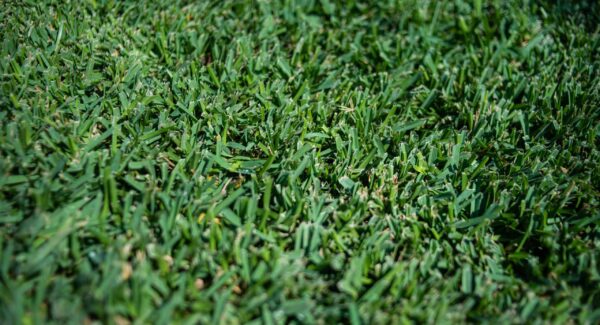How to Identify Your Grass Type
Effective lawn maintenance begins with accurately identifying your grass type. Knowing the variety of grass in your lawn is essential for determining the ideal growing conditions and the appropriate care needed to keep it vibrant and healthy.
We’ve created a comprehensive guide to assist homeowners in recognizing their lawn’s grass type based on its visual traits and growth patterns.
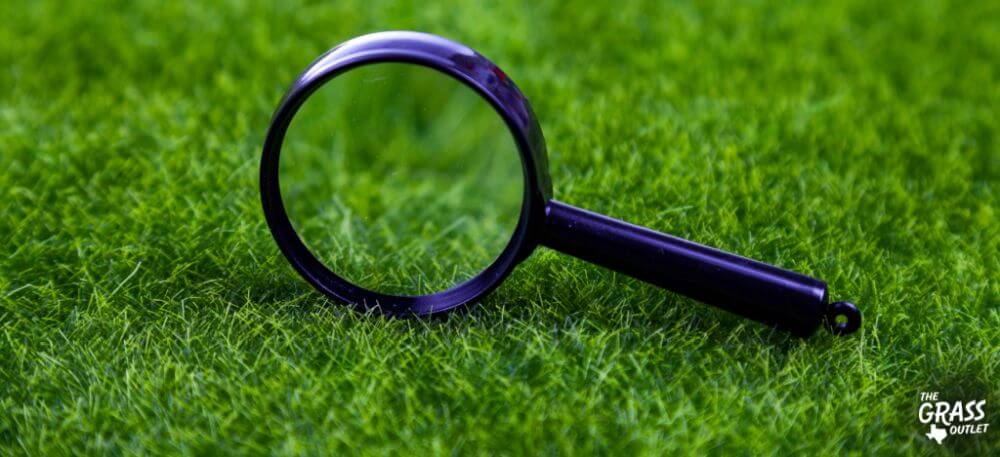
Why Identifying Your Grass Type is Important
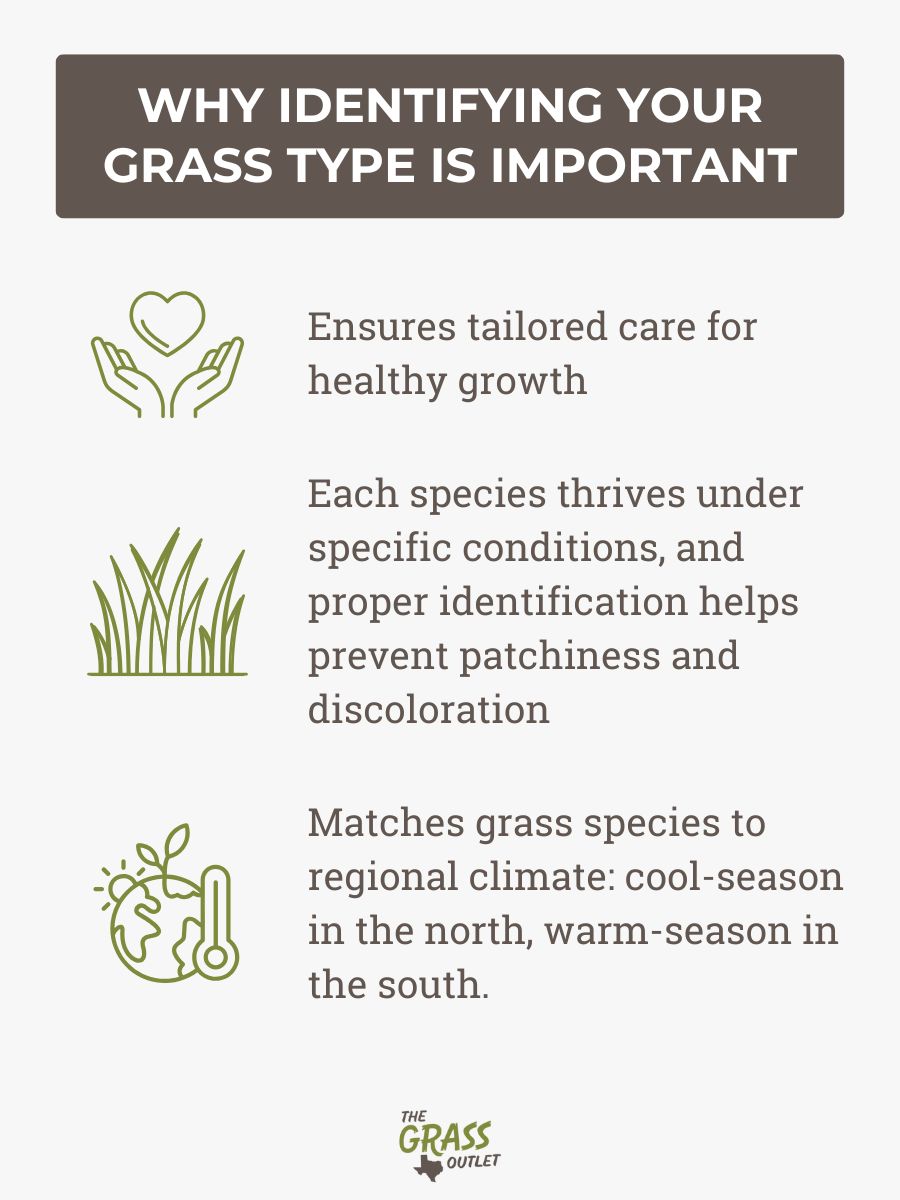
Understanding the type of grass in your yard is crucial, as each species thrives under certain conditions. Without proper identification, your lawn may suffer from patchiness or discoloration. In addition, different soil types and climates favor specific grass varieties.
The region you live in also influences the type of grass on your lawn. Typically, grasses are classified into warm-season and cool-season categories. If you are in a northern state, your lawn likely consists of cool-season grass, whereas southern states typically have warm-season varieties.
We recommend starting by determining whether your lawn is warm-season or cool-season. If you’re in a transitional zone, you might have either type. You can identify your grass type by observing when your lawn starts to green and grow—cool-season grasses flourish at 40-50°F, while warm-season grasses thrive at 60-90°F.
Common Characteristics to Look for in Grass Identification
Identifying grass species can be challenging due to the wide variety of species and their subtle differences. However, focusing on specific characteristics such as leaf shape, growth habits, or color allows you to narrow down the options and identify the grass more accurately.
Here are some essential features to consider when identifying grasses:
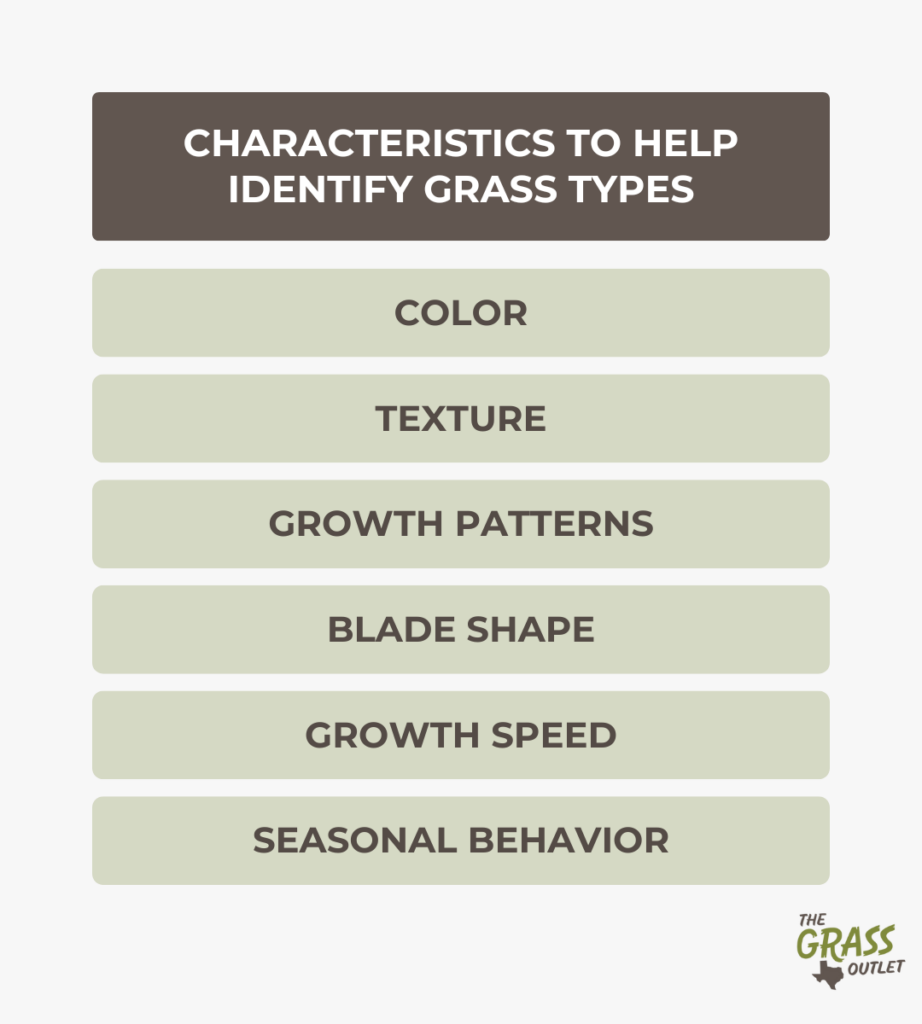 Color: The color of your grass is a vital identifier. Different grass types exhibit varying shades of green, from deep, rich greens to lighter or bluish hues, which can reveal important details about the species and its health.
Color: The color of your grass is a vital identifier. Different grass types exhibit varying shades of green, from deep, rich greens to lighter or bluish hues, which can reveal important details about the species and its health.
Texture: Grass texture varies widely, from fine and soft to coarse and rough. Fine-textured grasses are soft and delicate, while coarser varieties have a thicker, more rigid feel. Understanding texture helps identify the grass type and tailor care practices accordingly.
Growth Patterns: Notice how the grass grows. Some grasses form clumps (bunch-type), while others spread through stolons or rhizomes (creeping-type). This growth habit can be a crucial identifier.
Blade Shape and Texture: Pay attention to the leaf blade’s shape, width, and texture. Some grasses have fine, needle-like blades, while others have broader leaves. The edges of the leaf blade may be smooth, serrated, or covered in tiny hairs.
Growth Speed and Seasonal Behavior: Identifying whether your lawn consists of cool-season or warm-season grasses is vital to understanding its growth cycle. As mentioned, cool-season grasses thrive in spring and fall, whereas warm-season grasses perform best during mid-spring, early summer, all of fall, and sometimes half the winter.
Identifying the Grass Varieties Offered by The Grass Outlet
Bermuda Grass

Bermuda grass features fine blades that are thinner than most warm-season grasses. It grows densely, creating a soft, carpet-like feel underfoot. Its leaves range from deep blue-green to dark green with a fine to medium texture, folded vernation, and a hairy ligule.
When properly maintained, Bermuda grass forms a thick, resilient turf, perfect for high-traffic locations like parks or golf courses. It recovers from damage faster than many other grasses in this category.
Once established, Bermuda flourishes in full sun and is drought-tolerant. Its fast growth and ability to spread through rhizomes and stolons allow it to repair worn spots quickly, making it ideal for areas with heavy use. However, its vigorous growth can also lead it to invade nearby garden spaces, so managing its spread is essential to keep it in check.
- Characteristics: Dark green, delicate texture, dense growth
- Key Identifiers: Grows aggressively via stolons and rhizomes, tolerates heat and drought, recovers quickly from wear
- Best For: High-traffic areas, warm climates
- Varieties Offered: Celebration Bermuda, Tifway 419 Bermuda
Zoysia Grass
Tailored for the specific climate conditions of urban areas in the South, this warm-season grass excels in sunny environments. It stands out for its remarkable ability to withstand extreme heat, drought, shade, and even moderate cold, distinguishing it from other grass varieties.
Zoysia grass is incredibly hardy, adapting well to diverse conditions while needing much less water and mowing than many other grasses. Its natural resistance to pests and diseases makes it an excellent low-maintenance option. It forms a thick, soft carpet that feels comfortable to walk barefoot on.
Known for its deep green color and durable nature, Zoysia grass has fine blades slightly wider than Bermuda grass and tapers to the tips. It spreads through rhizomes and stolons, although its growth is slower than other warm-season grasses. This makes it noninvasive and reduces the need for frequent mowing.
Zoysia is available in various textures, from fine-bladed types to those with thicker, coarser blades, offering options to suit different preferences.
- Characteristics: Soft, dense, medium-to-fine texture, dark green color
- Key Identifiers: Grows slowly, spreads via stolons and rhizomes, thrives in warm climates, tolerates shade and heat
- – Best For: Shaded areas, warm climates, low-maintenance lawns
- Varieties Offered: Zeon Zoysia, Palisades Zoysia
St. Augustine Grass
St. Augustine grass remains a favorite among homeowners due to its lush, eye-catching appearance. This warm-season grass is drought-resistant and salt-tolerant, and its thick blades showcase a rich emerald-green hue. It thrives in warm, coastal areas with mild winters, making it adaptable to such environments.
Ideal for home lawns, St. Augustine grass performs well in areas that receive a mix of sun and shade and near beaches.
Its leaves are medium to dark green, coarse in texture, with a crease and a boat-shaped tip. It has folded vernation and a hairy ligule, with broad, rounded blades that give it a rough texture. One of its key benefits is its rapid, vigorous growth, which helps crowd out weeds and other invasive plants, creating a smooth, even lawn.
However, this grass is not suited for heavy foot traffic.
- Characteristics: Coarse texture, wide blades, dark green color
- Key Identifiers: Spreads quickly via stolons, prefers warm climates and partial shade, can handle salty soil
- Best For: Coastal areas, shaded spots, warm climates
- Varieties Offered: Raleigh St. Augustine, Palmetto St. Augustine, Texas Native St. Augustine
Overview of Cool-Season Grass Varieties
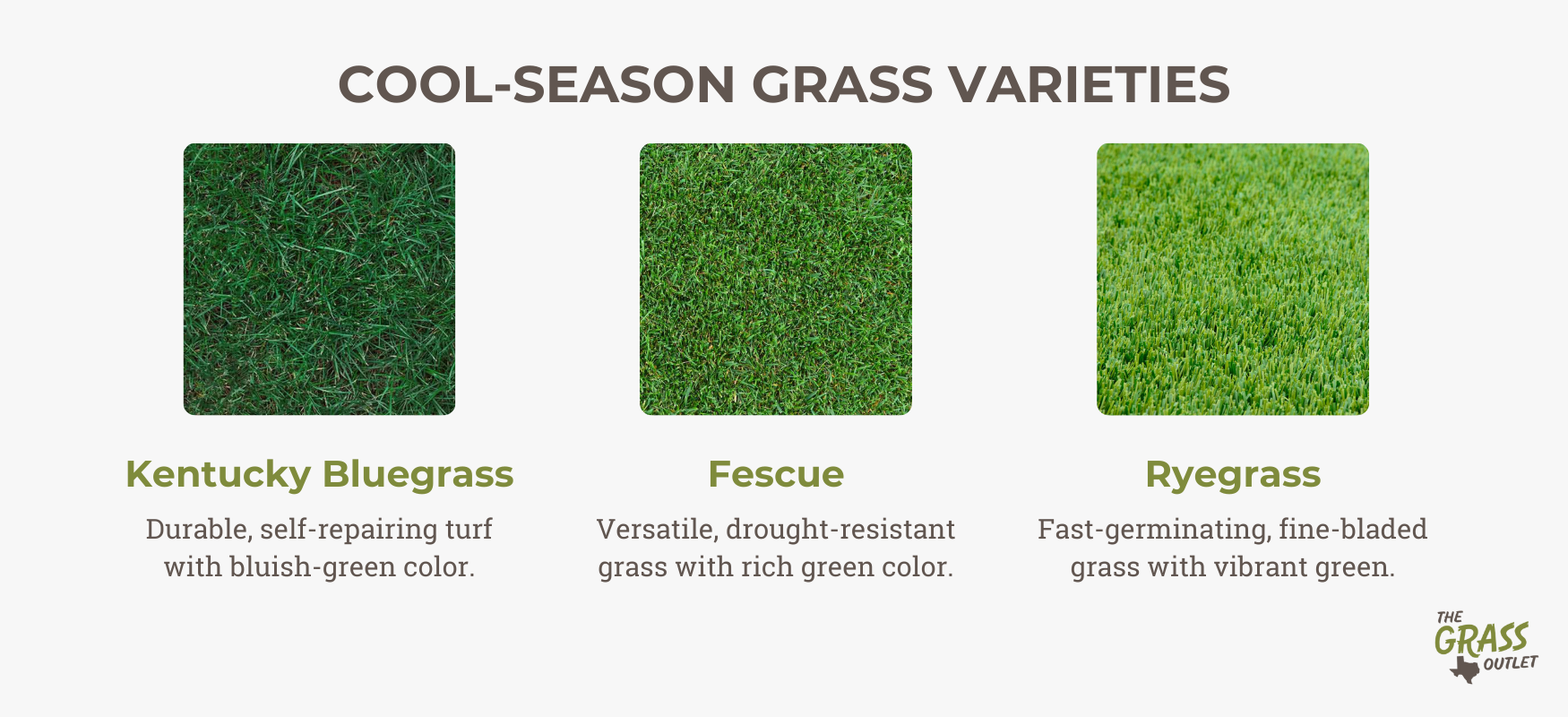
Cool-season grasses thrive in temperatures ranging from 60 to 75 degrees Fahrenheit, finding ideal conditions in cool, humid weather, with perfect growth in spring and fall. They flourish in regions like the Northeast U.S. and the Pacific Northwest, known for their harsh winter climates. While they usually retain their green color during winter, they may turn brown and dormant when summer temperatures reach 90 degrees Fahrenheit.
Popular cold-season grass varieties:
Kentucky Bluegrass: This grass is well-adapted to endure winter conditions and thrives in areas with cold winters and moderately warm summers. As a result, it grows best in the northern U.S., where the climate matches its natural growth cycle and preferences.
Kentucky bluegrass flourishes in full sunlight but can also tolerate some shade. It needs at least two inches of water per week during the summer, though it has limited heat and drought resistance.
It has narrow leaves with a boat-shaped tip and a noticeable midrib on the upper surface, with leaf edges that may feel slightly rough. Kentucky bluegrass spreads via rhizomes, forming a thick, connected turf, and its color ranges from deep green to bluish-green.
One of Kentucky bluegrass’s strengths is its quick recovery from damage. Compared to other cool-season grasses, it is excellent at self-repair, rebounding from dormancy caused by drought stress when provided with sufficient water or rain.
Fescue: Fescue is a member of the cool-season turfgrass family known for its ability to withstand heat, cold, and drought. This makes it a popular option for homeowners in colder northern regions who prefer low-maintenance lawns.
With its deep root system, fescue is highly efficient at absorbing nutrients from the soil, requiring less fertilizer and water than other cool-season grasses.
There are two main types of fescue commonly found in residential yards: tall fescue and fine fescue. The first one is appreciated for its low-maintenance nature and clump-forming growth. Its durability and tolerance to shade make it ideal for areas with heavy foot traffic, such as sports fields or commercial landscapes. On the other hand, fine fescue has slender, fine blades and is slightly less resistant to wear and tear than tall fescue. However, it compensates for this with excellent drought tolerance and minimal fertilization requirements, making it a great option for those seeking an eco-friendly lawn solution.
Regarding leaf structure, fine fescue boasts very narrow, needle-like blades, while tall fescue has broader leaves with a prominent midrib. Both varieties have a slightly rough texture on the upper surface, contributing to their distinctive feel. As for the growth, fescue follows a bunch-type growth habit, forming clumps rather than spreading across the lawn.
Fescue varies in color from medium to dark green, giving it a rich, vibrant appearance that enhances the beauty of any yard.
Ryegrass: This fine-bladed grass is popular for its fast germination and establishment. However, once established, it spreads slowly. Perennial ryegrass forms clumps, unlike the more aggressive Kentucky bluegrass, which spreads through underground stems called rhizomes. Like tall fescue, it grows in bunches and spreads through vertical shoots known as tillers rather than via rhizomes or horizontal above-ground stems called stolons.
Traditional perennial ryegrass varieties have relatively shallow root systems, limiting their ability to tolerate heat and drought.
The leaf blade of perennial Ryegrass is narrow, with a shiny surface on the upper side and a tapering tip. The edges of the leaves have a slightly rough texture. Its growth habit forms clumps, following a bunch-type growth pattern, and its color ranges from bright green to dark green.
Though more suited for northern climates, Ryegrass is commonly used in the South to maintain green lawns during winter. Southern homeowners overseed warm-season grasses like Bermudagrass with Ryegrass in the fall, as it germinates quickly and stays green through the cooler months, then dies off as warm-season grasses recover in the summer.
Regional and Climate Considerations

When selecting the grass for your yard, you must consider your personal preferences and specific needs. Still, one of the most critical factors is choosing a grass variety that thrives in your local climate. The performance of grass largely depends on whether it’s a cool-season or warm-season type. Cool-season grasses, as mentioned, flourish in cooler, temperate climates, while warm-season grasses are more resilient to heat and drought, making them ideal for hot, dry areas. Understanding this distinction is essential when choosing the best sod for your yard and ensuring your lawn aligns with the prevailing climate in your area.
Texas-Specific Recommendations for Choosing the Best Grass Type from The Grass Outlet
In Texas, where extreme heat, fluctuating rainfall, and varying soil types present unique challenges, selecting the right grass is vital for a healthy and beautiful lawn. The Grass Outlet recommends warm-season grass varieties like St. Augustine, Bermuda, and Zoysia for most regions of Texas due to their drought tolerance and ability to withstand the hot climate. These grass types are particularly well-suited for Texas’ demanding conditions, providing lush, resilient lawns that can endure the state’s harsh summers.
How to Identify if Your Current Grass Type is Suitable for Your Lawn’s Specific Conditions
We have already mentioned the importance of your region’s climate in ensuring appropriate grass choice. Your soil composition also plays a significant role in grass health.
Soil composition: Sandy soils drain water quickly, while clay soils retain moisture. Understanding your soil’s characteristics will help you match it with a grass type that can absorb nutrients and water efficiently for optimal growth.
Consider Sunlight Exposure: Sunlight is another critical factor. Observe whether your lawn gets full, partial, or no sunlight throughout the day. Some grasses, like Bermuda and Zoysia, thrive in direct sun, while others, such as Fine Fescue or St. Augustine, are more shade-tolerant. Matching your grass variety to your yard’s sunlight exposure will enhance its performance.
Factor in Lawn Use: Consider how you use your lawn. High-traffic areas benefit from durable grasses that recover quickly.
Maintenance Requirements: Maintenance needs vary between grass types. Lawns that demand regular care, including watering, mowing, and fertilizing, might need high-maintenance varieties.
Aesthetic Preferences: Grass types also offer various textures and shades of green. If you have a specific look in mind for your lawn, select a grass variety that matches your aesthetic goals, whether you desire a soft, lush lawn or one with a more natural, meadow-like appearance.
By following these guidelines, you can evaluate whether your current grass type fits your lawn or if adjustments are needed to achieve a healthy, attractive outdoor space.
Grass Identification Tools and Resources
Understanding the type of grass in your yard is more than just satisfying curiosity—it’s crucial for providing the appropriate care to keep your lawn looking lush and vibrant. Here is a final overview of what methods you can use to identify your grass type.
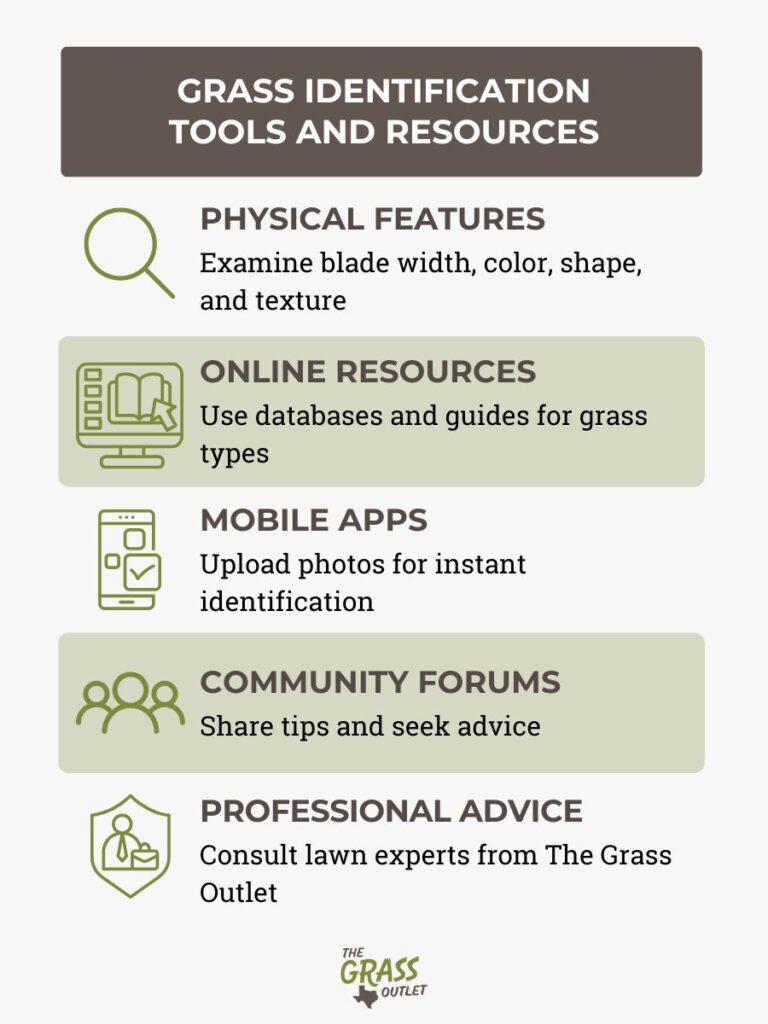
Observing Physical Features
Begin the identification process by examining your grass’s physical characteristics. Look at the blade width and color, the shape and texture of the leaves, and the growth pattern and density of the grass.
Use Online Resources and Databases
The internet offers a wealth of information on different grass types and lawn care. Various online databases and guides can help you identify your grass based on its features and the conditions of your yard.
Leverage Mobile Apps for Grass Identification
Technology has simplified the process of identifying plants, including grass types. Different mobile apps now allow you to upload a photo of your lawn and receive instant suggestions regarding the grass species. This modern tool may identify your grass more conveniently than ever.
Community Forums and Social Media Groups
Engaging with gardening communities online can also be a valuable resource. Forums and social media groups provide opportunities to share experiences, ask for advice, and learn from other enthusiasts who may have faced similar grass identification challenges.
Professional Advice
For the most accurate results, consulting with lawn and sod landscaping professionals is one of the best ways to ensure you choose the suitable grass for your property. Their expertise can help you consider your yard’s unique conditions and make an informed decision.
At The Grass Outlet, we offer a range of resources to help you select the right sod for your lawn. Our experts are ready to assist you in identifying the best grass type suited to your specific needs, ensuring a thriving, well-maintained lawn.
Final thoughts
Achieving a lush, vibrant lawn goes beyond basic maintenance practices. It requires understanding the specific needs of the grass in your yard. Properly identifying your grass type and applying the correct maintenance techniques will transform your lawn into a beautiful and functional extension of your home.
The Grass Outlet offers a wide selection of premium grass varieties to help you establish the perfect lawn.
Additionally, expert guidance can be the key to transforming a good lawn into a great one. For tailored advice on lawn care and sod selection, don’t hesitate to reach out to us. We’re here to help keep your lawn in top shape year-round.

